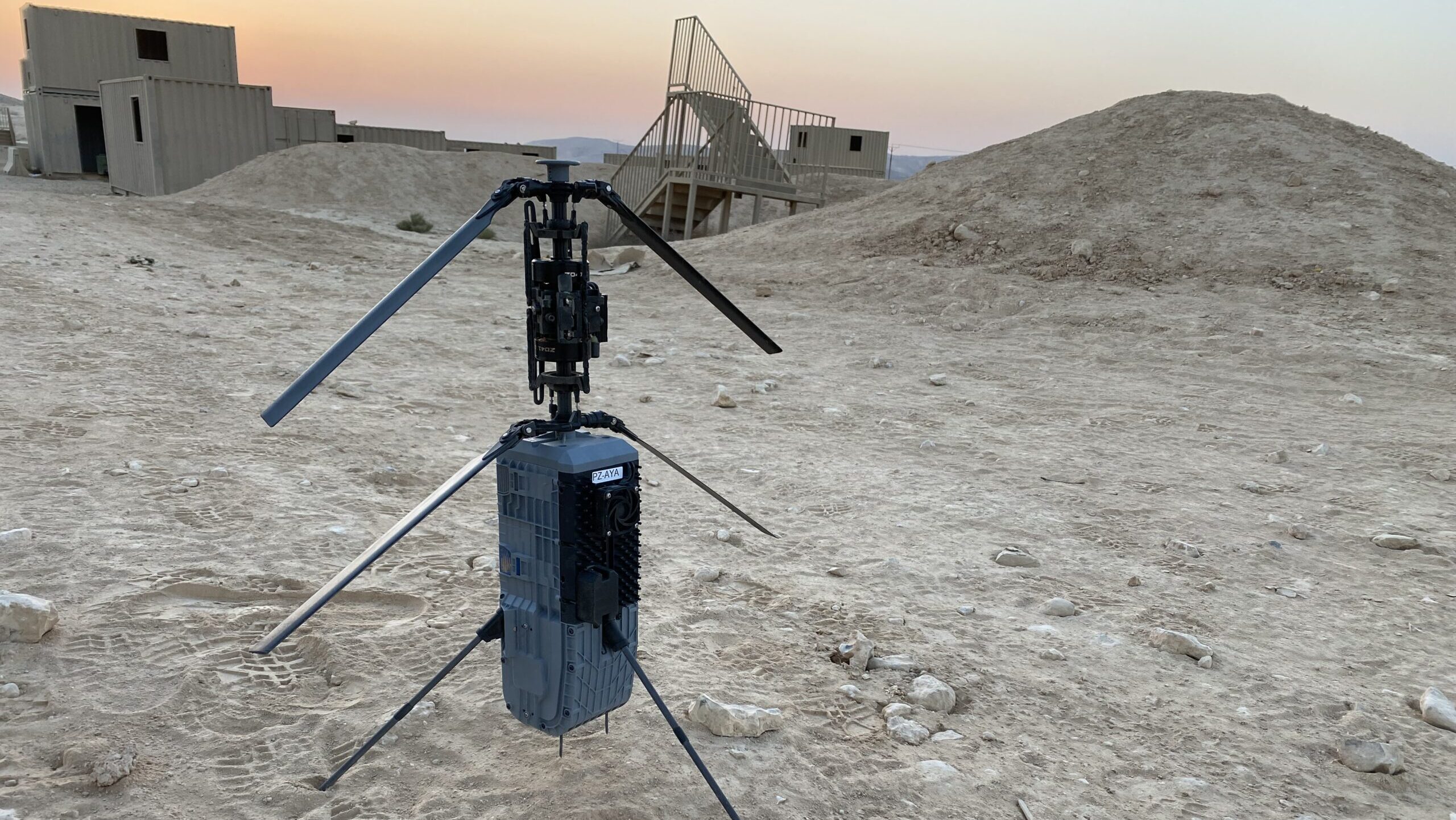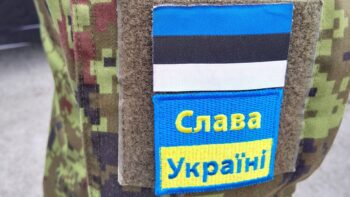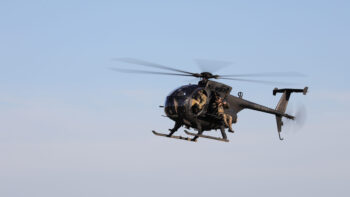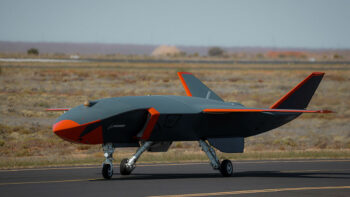
Israeli Defense Forces’ Spike Firefly loitering munition sits at the ready at a recent training exercise in September 2023. (Seth Frantzman / Breaking Defense)
JERUSALEM — This week the Israel Defense Forces said they used a “Maoz” drone to strike a target in Jenin, among the first uses of what’s known in English as the Spike Firefly loitering munition — a suicide drone that’s still being incorporated into IDF’s general combat capability.
The Firefly, made by Israeli defense giant Rafael, is for short-range combat and is aimed for the kind of urban or complex combat that Israel has faced on its borders and now in the West Bank. The way the IDF sees it, smaller loitering munitions like this may eventually be so ubiquitous for infantry units that they become similar to mortars or other standard weapons for platoons and companies.
Recently Breaking Defense got a chance to spend a day with an IDF officer who is training the next generation of soldiers on the Firefly. The training takes place at Mahane Tzor, a base in Israel’s Negev Desert.
It’s a dusty and hot day when Breaking Defense meets Lt. Daniel Enis, who is heading up the training, at a mock urban warfare site. The drone course is three weeks and begins in a classroom, before entering the training area where the soldiers learn to actually fly the system. Everyone in the IDF who is using the FireFly have passed through this training at this facility.
“I train them how to use it in every situation, and I teach the commander at what points they need it, such as grave danger or in battle or when no other weapon suffices. It can be used against targets, such as an enemy in a room, so the operator and commander need to understand when to use it,” said Enis.
RELATED: New birds, new uses: Israel’s next-gen UAV capabilities on display at DSEI 2023
The FireFly was first rolled out to special forces units — its first public use came in June — and now is being deployed to general infantry units. The IDF has looked at loitering munitions for infantry in the past, going back to 2016 when reports said it was considering use of IAI’s Rotem quadcopter.
Here, future instructors are also undergoing training in the concept of operations for the weapons so they can spread the knowledge to soldiers more broadly. The idea is that each company level unit may have several operators skilled in the munition’s use. “That’s the goal and it will take several years,” Enis says. “It will be used by infantry and special units.” Several dozen users have been trained so far in small courses.
Enis has been with this program since it began and also was involved with the IDF’s use of the Thor quadcopter drone, which conducts surveillance and can also be used in swarms, according to previous reports. The Thor is used at the battalion level for ISR missions, whereas the Spike FireFly will be incorporated at the company level with each operator also having access to several of the drones.
“It’s not fancy and distant, it’s a hundred meters away, and [operators] need to run and sweat and know they are saving lives” by using an unmanned loitering munition rather than sending soldiers, Enis said.
RELATED: After use in combat, Rafael looks to future for Spike Firefly loitering munition
The FireFly is considered by Rafael to be part of its larger Spike family of systems, that include anti-tank guided missiles (ATGM). It’s technically not classified as a drone; Rafael refers to it as a “miniature tactical loitering weapon.”
The munition has electro-optics at its base and a replaceable battery compartment, which means it can also be used without a munition payload to extend its flight time from around 15 minutes to 30 minutes, according to Rafael’s material on the system. It weighs six pounds and has a range up to 1,000 meters, with flight speeds up to 60 kilometers per hour.
At the training site, reporters observed soldiers operating the drone for a quarter of an hour as they practiced flying and landing. It buzzed overhead and eventually landed on the side of a berm near a small building. Compared to some drones that are very loud, like flying lawnmowers, this one is relatively quiet and any other background noises, such as trucks driving or guns firing, would obscure the sound.
Enis described some of the challenges involved with training soldiers with the new technology, who are more used to the relative simplicity of assault rifles. They need to learn to understand what they are seeing when they operate the drone via a tablet-like interface, for instance. The trainers also get feedback from the users, including those who are using the drone in the field, such as in Jenin. With the current tempo of operations in the West Bank, they are getting near real-time feedback.
Israeli defense companies are adapting loitering munitions for many new uses. Recently, Elbit Systems announced a $95 million sale of its SkyStriker loitering munition to an unnamed European country. That weapon has a 10-kilogram warhead, and this is the first time it has been sold in its new canister configuration. The Israeli firm Spear UAV showed off a version of its loitering munition that is also launched from a canister at the recent DSEI show in London.
As for the Firefly, Enis said, “They talked about this munition for years, it’s a big privilege to train with it and now it’s inside the IDF and now the IDF can use this and more advanced tech.”
Eight ‘capability coalitions’ are rushing arms to Ukraine. Here’s who will donate what. (EXPLAINER)
NATO has established eight different capability coalitions designed to get critical systems or ammo into Ukrainian hands quickly. Here’s a deep dive into how they’re all faring.


























